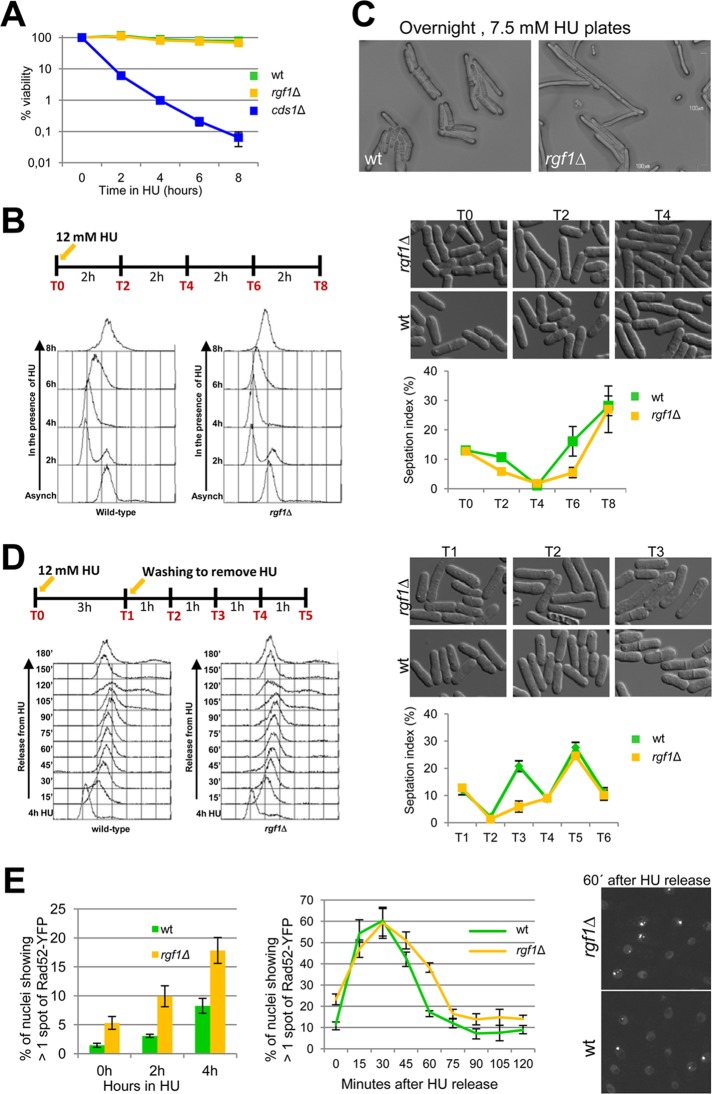FIGURE 7:
Rgf1p is required for efficient recovery from an HU-induced replication arrest. (A) Exponential cultures of wild-type, rgf1Δ, and cds1Δ cells were treated with 12.5 mM HU (time 0). At the indicated time points, samples were collected and washed free of HU, and viability was determined by colony formation on YES plates for 3 d at 28ºC. (B) Asynchronous cultures of wild-type and rgf1Δ cells grown at 28ºC were arrested with 12 mM HU. Cells were harvested at the time of HU addition (0) and at 2 h intervals thereafter, as indicated in the scheme. A portion of each culture was removed for photographing, and the rest of the cells were fixed and processed to analyze the DNA content by flow cytometry or stained with aniline blue to determine the number of septa (n > 200) for each time point. Data are means ±SD, n = 3. (C) Wild-type and rgf1Δ cells were photographed after 16 h of incubation at 28ºC on YES plates supplemented with 7.5 mM HU. White bar, 100 μm. (D) Asynchronous cultures of wild-type cells and rgf1Δ cells grown at 28ºC were treated with 12 mM HU for 3 h, released into fresh medium without HU, and then grown for another 4 h at 28ºC. Samples T0 and T1 were taken before and after HU treatment, and samples T3, T4, and T5 were taken as indicated in the scheme. A portion of each culture was removed for photographing, and the rest of the cells were processed as in B. (E) Quantitation of the fraction of nuclei containing more than one Rad52-YFP foci in asynchronously growing cells (0 h) or in cells treated with 12.5 mM HU for 2 and 4 h in wild type and rgf1Δ mutants (left). Asynchronous cultures of wild-type and rgf1Δ cells were arrested in 12.5 mM HU for 3 h and reinoculated into fresh medium without HU. Samples were taken at the indicated time points to quantify the fraction of nuclei containing more than one Rad52-YFP foci (middle). Right, nuclei containing Rad52-YFP in rgf1Δ and wild-type cells imaged 60 min after HU release.

